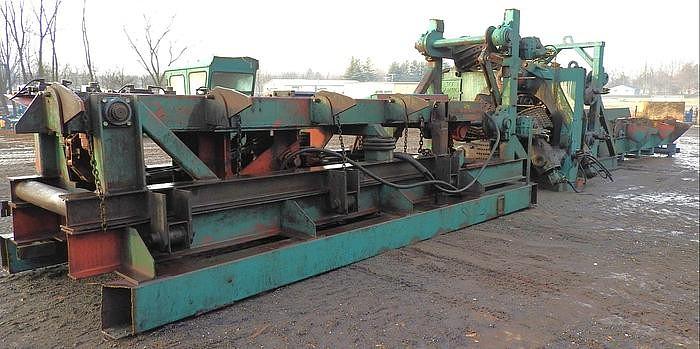
Debarkers: The Key to Efficiency in Sawmill Operations
Logs arrive at the sawmill covered in rough bark, dirt, and moisture, fresh from the forest. Before they can be processed into lumber, they must be prepared for an efficient journey through the mill. One of the most crucial—but sometimes overlooked—pieces of equipment in this process is the debarker.
A well-designed sawmill operates like a finely tuned system, and debarking is one of the first steps that determines its overall efficiency. Without it, mills face dull saw blades, increased downtime, and wasted material. With it, operations run smoother, output increases, and costs decrease.
How Debarking Enhances Efficiency
Bark is more than just an outer layer of a tree—it carries dirt, grit, and excess moisture that can cause serious wear on sawmill equipment. When logs move through the mill unprocessed, this debris dulls blades and adds unnecessary resistance, slowing production. Worse, it leads to more frequent blade changes and increased maintenance, cutting into valuable production time.
Removing bark before sawing reduces the strain on saw blades, allowing them to stay sharper for longer. With less friction and resistance, saws cut cleaner and faster, leading to more consistent lumber quality. This seemingly small step streamlines the entire operation, from initial processing to final product.
Beyond protecting equipment, debarking also increases log throughput. Clean logs move more efficiently through conveyors, reducing stoppages caused by bark shedding mid-process. Without excess debris, sawmills experience fewer bottlenecks, enabling them to process more logs in less time.

The Right Debarker for the Job
Not all debarkers are the same, and selecting the right one is key to maximizing efficiency. Sawmills process logs of different species, sizes, and moisture levels, each requiring a different approach to debarking.
- Ring Debarkers: These machines use rotating rings with cutting heads to strip away bark. They work well for uniform log sizes and high-speed operations.
- Rotor Debarkers: Equipped with spinning rotors, these machines excel at handling a variety of log sizes and irregular shapes.
- Hydraulic Debarkers: Using high-pressure water jets, these systems cleanly remove bark without mechanical abrasion. They are effective but require careful water management to avoid excess log moisture.
The right machine depends on a mill’s volume, log characteristics, and overall production goals. Investing in the correct debarker ensures that logs enter the saw line in the best possible condition, improving both quality and efficiency.
Cost Savings and Increased Output